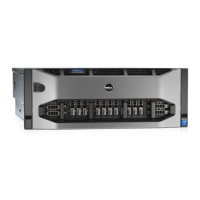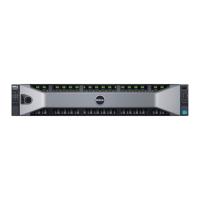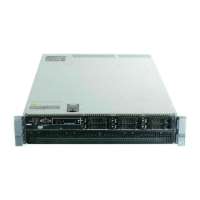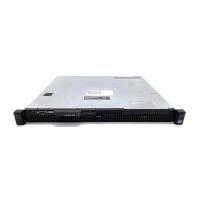Table 14. Power supply eciency levels
Power supply output Class 10% 20% 50% 100%
1100W AC Platinum 89.00% 93.00% 94.50% 92.00%
1100W DC Platinum 80.00% 88.00% 91.00% 88.00%
1600W AC Platinum 87.00% 90.00% 94.00% 91.00%
2000W AC Platinum 89.00% 93.00% 94.00% 91.00%
Thermal and acoustics
Thermal management of PowerEdge R940 delivers high performance for the right amount of cooling to components at the lowest fan
speeds across a wide range of ambient temperatures from 10°C to 35°C (50°F to 95°F) and to extended ambient temperature ranges
(see Environmental Specications) . The benets to you are lower fan power consumption (lower server system power and data center
power consumption) and greater acoustical versatility. The PowerEdge R940 is quiet enough to be used in an oce environment in typical
and minimum congurations.
Thermal design
The thermal design of the PowerEdge R940 reects the following:
• Optimized thermal design: The system layout is architected for optimum thermal design.
• System component placement and layout are designed to provide maximum airow coverage to critical components with minimum
expense of fan power.
• Comprehensive thermal management: The thermal control system regulates the fan speed based on several dierent responses from all
system- component temperature sensors, as well as inventory for system congurations. Temperature monitoring includes components
such as processors, DIMMs, chipset, the inlet air ambient, hard disk drives, NDC, and GPU.
• Open and closed loop thermal fan speed control: Open loop thermal control uses system conguration to determine fan speed based on
inlet air ambient temperature. Closed loop thermal control method uses feedback temperatures to dynamically determine proper fan
speeds.
• User-congurable settings: With the understanding and realization that every customer has unique set of circumstances or
expectations from the system, in this generation of servers, we have introduced limited user- congurable settings residing in the
iDRAC9 BIOS setup screen. For more information, see the PowerEdge R940 Owner’s Manual on Dell support.
• Cooling redundancy: The R940 allow N+1 fan redundancy, allowing continuous operation with one fan failure in the system.
Acoustical design
The acoustical design of the PowerEdge R940 reects the following:
• Versatility: The R940 saves power draw in the data center but are also quiet enough for oce environment in typical and minimum
congurations. You may nd that the system is suciently quiet where the sound it emits blends into the environment.
• Adherence to Dell’s high sound quality standards: Sound quality is dierent from sound power level and sound pressure level in that it
describes how humans respond to annoyances in sound, like whistles and hums. One of the sound quality metrics in the Dell
specication is prominence ratio of a tone.
• Noise ramp and descent at boot-up from power o: Fan speeds and noise levels ramp during the boot process (from power- o to
power- on) in order to add a layer of protection for component cooling in the event that the system were not to boot properly. In order
to keep the boot-up process as quiet as possible, the fan speed reached during boot-up is limited to about half of full speed.
• Noise level dependencies: If acoustics is important to you, several conguration choices and settings are important to consider:
• For lower acoustical output, use a small number of lower rotational- speed SATA hard drives, nearline SAS hard drives, or non-
rotational devices like SSDs. 15k hard drives generate more acoustic noise than that of lower rotational- speed hard drives, and
noise increases with number of hard drives.
• Fan speeds and noise may increase from baseline factory congurations if certain proles are changed by the user or the system
congurations are updated. The following is a list of items that impact fan speeds and acoustical output:
26
Power, thermal, and acoustics
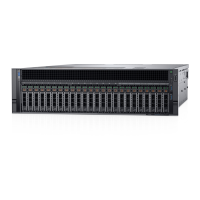
